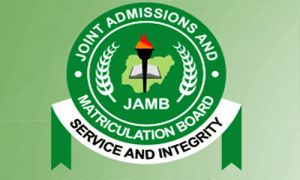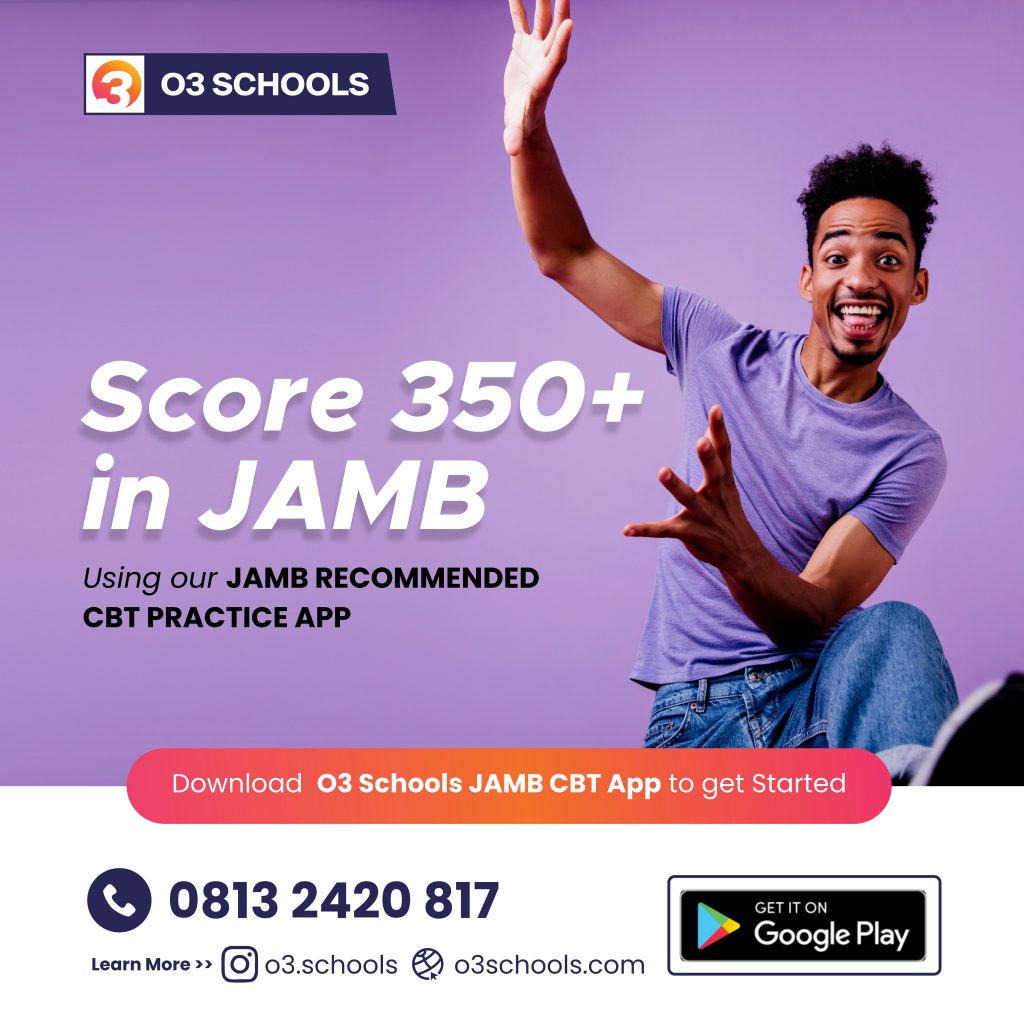Joint Admissions and Matriculation Board JAMB Syllabus for fine Art 2023
Contents

We are aware at mytopschools.com that you are searching for Joint Admissions and Matriculation Board JAMB Syllabus for fine Art 2023, then you are not alone.
GENERAL OBJECTIVES
The aim of the Unified Tertiary Matriculation Examination (UTME) 2023 syllabus in Art is to prepare the candidates for the Board’s examination. It is designed to test their achievement of the course objectives, which are to:
(i). exhibit knowledge of the fundamental elements, principles and terminologies of art;
(ii). show knowledge of historical dimensions of art with emphasis on Nigerian arts and crafts;
(iii). demonstrate knowledge of artistic techniques, processes, the use of materials and maintenance of tools and equipment;
(iv). display aesthetic awareness of the environment, meaning and functions of art in society.
SECTION A

JAMB SYLLABUS FOR FINE ART, MYTOPSCHOOLS
1. CLASSIFICATION OF ART:
Topics
a. Visual Arts: (Fine and Applied Arts)
b. Performing Arts: (Music, Dance and Drama)
c. Literary Arts: (Poetry, Prose, Recitals) etc.
Objectives
Candidates should be able to:
i. differentiate between the three branches of art;
2. ELEMENTS AND PRINCIPLES OF DESIGN:
Topics
a. Elements: line, colour, shape, form, texture, tone, value, space etc.
b. Principles: balance, rhythm, proportion, harmony, contrast, repetition, dominance, variety, etc.
Objective
Candidates should be able to:
i. identify the elements of design;
ii. analyze the principles of design;
3. ART TERMS:
Pigments, motif, greenware, armature, silhouette, chiaroscuro, cireperdue, terracotta etc.
Objectives;
Candidates should be able to:
i. identify art terms;
ii. link the terms to their areas of art;
iii. use the terms in analyzing artworks
SECTION B
1. HISTORICAL DIMENSIONS OF ART:
Topics;
a. Prehistoric, Greek and Roman Art;
b. Medieval Art: architecture, surface decorations and calligraphy;
c. Renaissance Art and Artists: Giotto Di Bondone, Michelangelo Buonarroti, Leonardo da Vinci and Raphael (Raffaello Santi);
d. 19th and 20th Century art movements; Impressionism, Realism, Futurism, Cubism, Bauhaus, Pop art, Abstract Expressionism and Fauvism.
Objectives;
Candidates should be able to:
i. compare their materials, styles and techniques;
ii. classify the periods and styles with emphasis on architecture, surface decoration and calligraphy;
iii. compare the artists, their works and styles;
iv. differentiate between the various art movements.
v. analyze their styles techniques, innovations and influences;
2. TRADITIONAL AFRICAN ART:
Egypt, Ashanti, Dogon, Mossi, Fon, Senufo, Bambara, Mende, Kissi, Bamileke and Bakumba.
Objectives;
Candidates should be able to:
i. categorize works in terms of style, materials and locations;
ii. categorize works in terms of styles, materials and locations;
3. TRADITIONAL NIGERIAN ART:
Topics
Nok, Igbo-Ukwu, Ife, Benin, Esie, Igala, Jukun, Akwashi, and Mbari
Objectives;
Candidates should be able to:
i. analyze the works in terms of functions, characteristics and locations;
4. NIGERIAN CRAFTS:
Topics
Pottery, woodworks, cloth-weaving, carving, leather works, metal works, beadworks, body decoration, mat and cane weaving.
Objectives;
Candidates should be able to:
i. trace the origins, locations and styles;
5. DEVELOPMENT IN CONTEMPORARY NIGERIAN ARTS AND ARTISTS:
Topics
a. Art Schools: Zaria, Nsukka, Osogbo group etc.
b. Nigerian artists and art educators; Aina Onabolu, Ben Enwonwu, S. I. Wangboje, Jimoh Akolo, Dele Jegede etc.
c. Museums, galleries and art centres;
d. Art institutions, cultural art centres, national art organizations – Nigerian Society for Education through Arts (NSEA), Society for Nigerian Artists (S.N.A), National Council for Arts and Culture (N.C.A.C), etc.
e. Major Festivals: Argungu Fishing Festival, Eyo, Egungun, Iri-ji (New Yam), Durbar, Igue, Ekpo, Odo, etc.
Objectives;
Candidates should be able to:
i. determine the influence of the art schools and groups;
ii. assess the artists in terms of their works, specializations, techniques and styles;
iii. analyze the functions of museums, galleries, art centres and art institutions;
iv. evaluate their impact on the development of art;
v. assess their roles and functions;
vi. examine the impact of major festivals on art and culture.
SECTION C
1. ARTISTIC SKILLS, TECHNIQUES AND PROCESSES
Topics
a. Two-Dimensional Art: drawing, painting, graphics and textile design.
b. Perspective:
i. Linear, angular, aerial, parallel etc.
ii. Perspective terms: foreground, picture plane, eye-level, vanishing point, foreshortening, optical illusion, depth etc.
c. Sculpture, Ceramics and Crafts,
d. Computer Graphics: CorelDraw
Objectives;
Candidates should be conversant with:
i. the techniques, skills and processes with emphasis on tone, composition and colour application;
ii. the types of perspective;
iii. the use of perspective rules and terms;
iv. techniques, skills and processes;
v. the basic tools of designs
2. TOOLS, MATERIALS AND EQUIPMENT
Topics;
a. Two-Dimensional Art Tools: brushes, lino cutters, drawing instruments, calligraphic pens, sharpeners etc.
b. Two-dimensional Art Materials: pencils charcoal, pastel, crayon, fixative, fabric, dyes, lino, wood blocks etc.
c. Two-Dimensional Art Equipment: air compressor, spray gun, enlarger, computer etc.
d. Improvisation of tools, materials and equipment;
i. Two-Dimensional Art: colours, brushes, calligraphic pens etc.
ii. Three-Dimensional Art: spatula, kiln, beater, etc.
Objectives;
Candidates should be able to:
i. maintain tools and art materials;
ii. use art materials and tools;
iii. operate and maintain art equipment;
ix. improvise alternatives
SECTION D
1. ART APPRECIATION
Topics
a. Man-made objects: architecture, sculpture etc.
b. Natural phenomena: Zuma Rock, Ikogosi Warm Springs, etc
Objectives;
Candidates should be able to:
i. appreciate the aesthetic qualities of natural and man-made aesthetic phenomena in Nigerian environment;
ii. differentiate between natural and man-made aesthetic phenomena;
2. MEANING AND FUNCTIONS OF ART IN SOCIETY
Topics
a. What art is.
b. Functions of art in the society: religious, social, cultural, political, therapeutic and economic needs.
c. Functions of art in the media: advertisement, education, recreation etc.
Objectives;
Candidates should be able to:
i. examine the meaning and functions of art;
ii. use art to enhance societal values;
iii. assess the role of art in the media;
3. ART ENTREPRENEURSHIP
Topics
Job prospects in Visual Arts: Ceramist, Curator, Textile designer, Industrial designer, Sculptor, Photographer, Cartoonist, Illustrator etc.
Objectives;
Candidates should be able to:
i. identify job opportunities in visual arts
RECOMMENDED TEXTS
Banjoko I. (2000) Visual Arts made Easy: Textbook for Schools and Colleges, Lagos, Movic Publishing Company Ltd.
Egonwa, O.D. (1991) African Art: A contemporary Source Book, Benin: Osasu Publishers.
Egunlae, S.A. (1985) The Essential Ground work in Art and Design, Omotola Standard Press and Bookshop (Nig) Ltd.
Erese, U. O. and Ogunsina E. D. (1989) Creative Arts and Crafts for J. S. S. Onibonoje Press.
Nahab, S. J. (2003) Art of the Millennium for Senior Secondary Schools, Ehindero (Nig.) Ltd.
Ogumor, E. (1993) Certificate Art for Junior Secondary Schools and Senior Secondary Schools, Ibadan: University Press Plc.
Olaosebikan W. A. (1982) Cultural and Creative Arts, Evans.
Olurukooba, B. K. (1991) Art for Senior Secondary Schools, ABU.
Uzoagba I. N. (1982) Understanding Art in General Education, Onitsha; African Publishing Ltd.
Wangboje, I. N. (1982) A Textbook on Art for Junior and Senior Secondary Schools, Evans Publishers.
That’s the much we can take on the topic “Joint Admissions and Matriculation Board JAMB Syllabus for fine Art ”.
Thanks For Visiting
MYTOPSCHOOLS
READ THIS RELATED JAMB POSTS TO KNOW MORE ABOUT JAMB
Price, Selling Points of JAMB UTME E-Pin (Scratch Card)
Joint Admissions and Matriculation Board JAMB Guidelines For Admission
Joint Admissions and Matriculation Board JAMB Cut-Off Marks Admission Exercise
Free JAMB Past Questions for (PDF Format) Download Here
Joint Admissions & Matriculation Board JAMB Brochure
JAMB Subject Combinations for All Courses
JAMB CAPS How to ACCEPT or REJECT Admission Offer
How to Print JAMB Original Result Slip for All Years
How to Easily Register JAMB Using Interswitch
Joint Admissions and Matriculation Board JAMB Mock Examination for UTME Candidates
JAMB Profile Code Generation & Purchase of e-Pin for New & Previously Used Numbers
Joint Admission Matriculation Board JAMB Institution Matriculation List (JAMB CAPS)
How to Create JAMB Online Profile
How to Buy JAMB ePINS Via Interswitch
UTME: Joint Admissions and Matriculation Board JAMB List of Prohibited Items in Exam Hall
JAMB Direct Entry Form Approved Selling Points
JAMB Direct Entry Registration : Instructions & Guidelines
AMB Direct Entry Registration Centres in Nigeria
JAMB Subject Combinations for Courses in the Arts
JAMB Subject Combinations for Courses in the Social Sciences
JAMB Subject Combinations for Courses in the Sciences
JAMB Recommended Books for Music
JAMB Recommended Books for Mathematics
Requirements to Start a JAMB CBT Centre
Joint Admissions and Matriculation Board JAMB Form – Registration Instructions and Guidelines

How can I download it